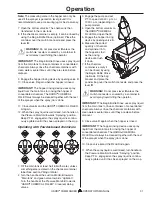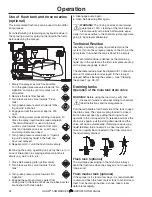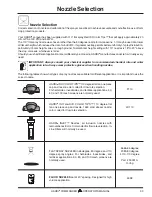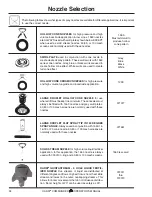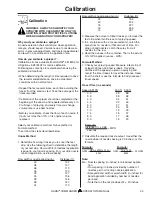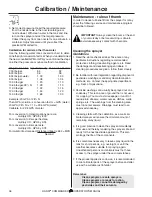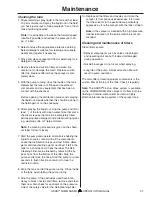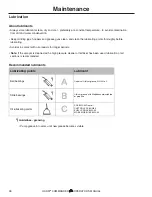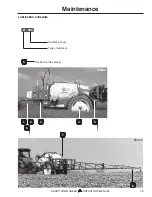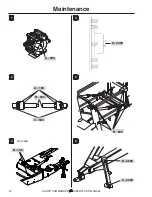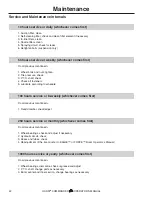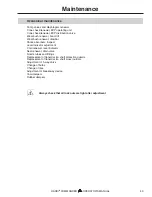
37
HARDI
®
COMMANDER OPERATOR’S MANUAL
Cleaning the tank
1. Dilute remaining spray liquid in the tank with at least
10 parts of water and spray the liquid out in the field
you have just sprayed - See paragraph “Use of flush
tank and rinsing nozzles”.
Note:
It is advisable to increase the forward speed
(double if possible) and reduce the pressure to 20
psi (1.5 bar).
2. Select and use the appropriate protective clothing.
Select detergent suitable for cleaning and suitable
deactivating agents if necessary.
3. Rinse and clean sprayer and tractor externally. Use
detergent if necessary.
4. Remove tank and suction filters and clean. Be
careful not to damage the mesh. Replace suction
filter top. Replace filters when the sprayer is com-
pletely clean.
5. With the pump running, rinse the inside of the tank.
Remember the tank roof. Rinse and operate all
components and any equipment that has been in
contact with the chemical.
Before opening the distribution valves and spraying
the liquid out, decide whether this should be done in
the field again or on the soakaway.
6. After spraying the liquid out, stop the pump and fill at
least
1
/
5
of the tank with clean water. Note that some
chemicals require the tank to be completely filled.
Add appropriate detergent and/or deactivating agent,
e.g. washing soda or Triple ammonia.
Note:
If a cleaning procedure is given on the chemi-
cal label, follow it closely.
7. Start the pump and operate all controls enabling the
liquid to come in contact with all the components.
Leave the distribution valves until last. Some deter-
gents and deactivating agents work best if left in the
tank for a short period. Check the label. The Self-
Cleaning Filter can be flushed by removing the by-
pass hose from the bottom of the filter. Stop the
pump and remove the hose. Start the pump for a few
seconds to flush filter. Be careful not to lose the
restrictor nozzle.
8. Drain the tank and let the pump run dry. Rinse inside
of the tank, again letting the pump run dry.
9. Stop the pump. If the pesticides used have a ten-
dency to block nozzles and filters, remove and clean
them now. Also check for sediment on the pressure
side of the safety valve for the Self-Cleaning Filter.
Maintenance
10. Replace all the filters and nozzles and store the
sprayer. If, from previous experiences, it is noted
that the solvents in the pesticide are particularly
aggressive, store the sprayer with the tank lid open.
Note:
If the sprayer is cleaned with a high pressure
cleaner lubrication of the entire machine is recom-
mended.
Cleaning and maintenance of filters
Clean filters ensure:
• Sprayer components such as valves, diaphragms
and operating unit are not hindered or damaged
during operation.
• Nozzle blockages do not occur whilst spraying.
• Long life of the pump. A blocked suction filter will
result in pump cavitation.
The main filter protecting sprayer components is the
suction filter at the top of the tank. Check it regularly.
Note:
The HARDI
®
Flush & Rinse system is available
on the COMMANDER Plus sprayers. It offers both the
flushing of internal components and also a highly
effective internal rinsing system of the sprayer tank.









